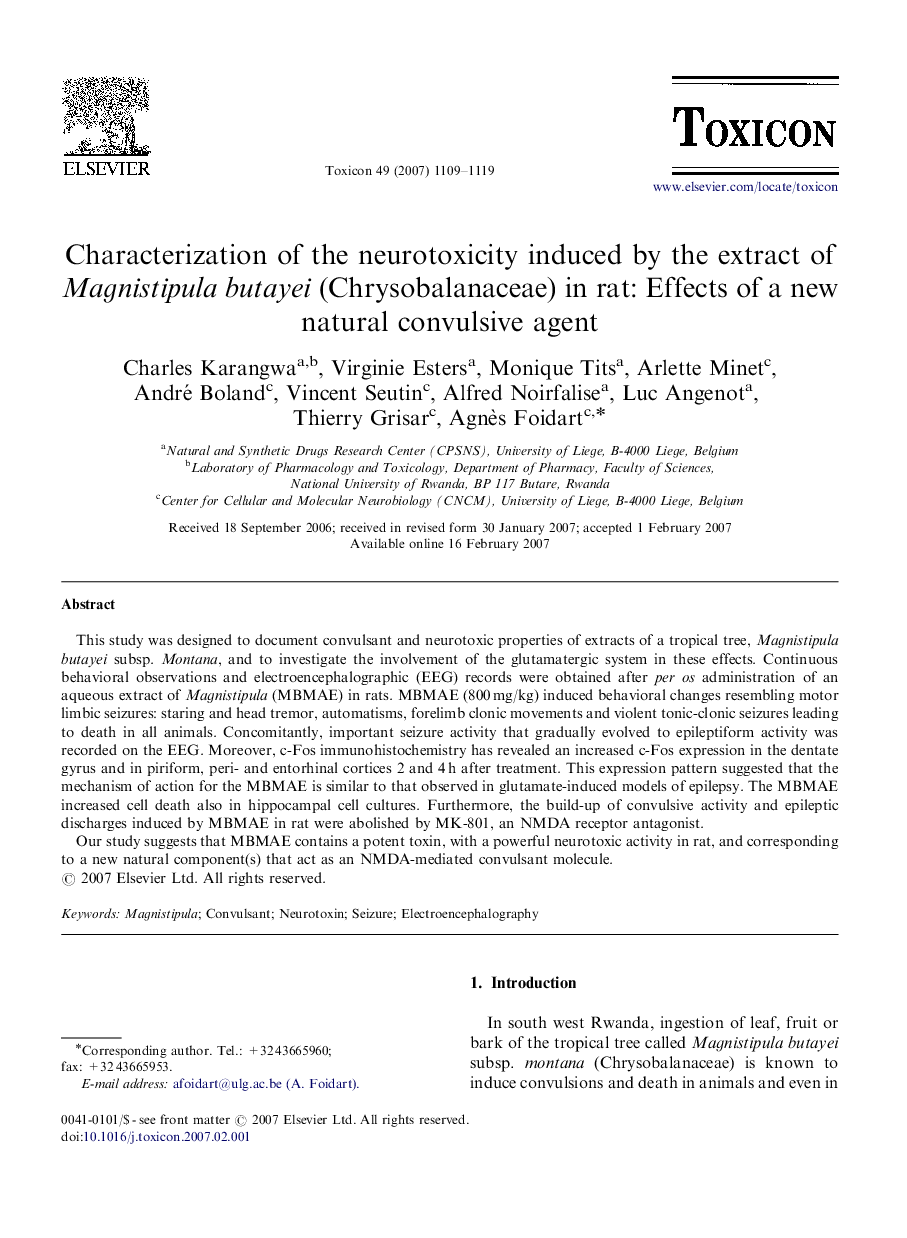| Article ID | Journal | Published Year | Pages | File Type |
|---|---|---|---|---|
| 2066050 | Toxicon | 2007 | 11 Pages |
This study was designed to document convulsant and neurotoxic properties of extracts of a tropical tree, Magnistipula butayei subsp. Montana, and to investigate the involvement of the glutamatergic system in these effects. Continuous behavioral observations and electroencephalographic (EEG) records were obtained after per os administration of an aqueous extract of Magnistipula (MBMAE) in rats. MBMAE (800 mg/kg) induced behavioral changes resembling motor limbic seizures: staring and head tremor, automatisms, forelimb clonic movements and violent tonic-clonic seizures leading to death in all animals. Concomitantly, important seizure activity that gradually evolved to epileptiform activity was recorded on the EEG. Moreover, c-Fos immunohistochemistry has revealed an increased c-Fos expression in the dentate gyrus and in piriform, peri- and entorhinal cortices 2 and 4 h after treatment. This expression pattern suggested that the mechanism of action for the MBMAE is similar to that observed in glutamate-induced models of epilepsy. The MBMAE increased cell death also in hippocampal cell cultures. Furthermore, the build-up of convulsive activity and epileptic discharges induced by MBMAE in rat were abolished by MK-801, an NMDA receptor antagonist.Our study suggests that MBMAE contains a potent toxin, with a powerful neurotoxic activity in rat, and corresponding to a new natural component(s) that act as an NMDA-mediated convulsant molecule.
